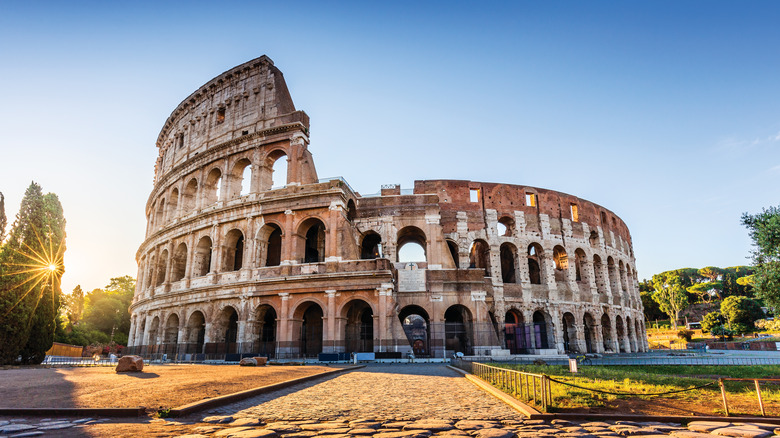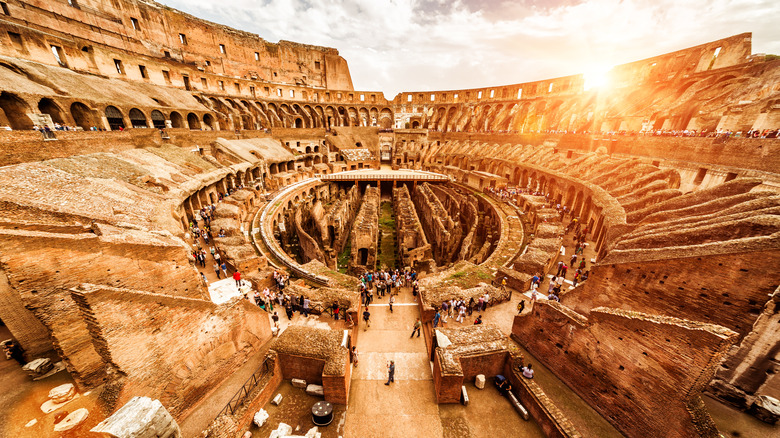How The Colosseum Was Nearly Destroyed
While in recent history the Colosseum represents little more than an ancient attraction of modern Rome, for centuries, it was more associated with its complex and gruesome history. Even though gladiators did not die as often as the media implies, they often did in addition to facing all manner of grievous bodily injuries. Thousands of animals from all parts of the world (as it was known to Rome) were also brought to theatrically be hunted, battle gladiators, and consume prisoners (via Live Science).
The complex was built to entertain the masses, and did so for generations with little opposition to the bloody spectacles it hosted. Yet for all the engineering that went into it, with underground tunnels and a structure that allowed it to be flooded for faux naval battles, the Colosseum saw less and less use after gladiatorial fights were banned. It remained the location of less homicidal activities until the fall of the Western Roman Empire. By this point, it — and many of Rome's ancient structures — began to undergo the consequences of infrastructural collapse.
Natural disasters and human greed destroyed much of the Colosseum
Rome was replaced as the capital of the late-Western Roman Empire by Ravenna, though it later became relevant again as the residence of the pope and his government. The state of older buildings like the Colosseum did not reflect this, though, as multiple earthquakes, fires, and other natural disasters were endured by the increasingly fragile stonework. According to National Geographic, only a third of the original building remains after years of exposure and a lack of local incentive to repair any damage.
In fact, there were many who were more than willing to loot the Colosseum for its stone or any fittings inside that might have value. Original metals of value found within were often pulled from the walls to be sold or used (via Guide to Rome). It was finally spared total destruction by Pope Benedict XIV in 1749. He declared the site to be holy on account of the early Christian martyrs supposedly killed within its walls, forbidding any further theft of its architecture (via AR-Tour).

